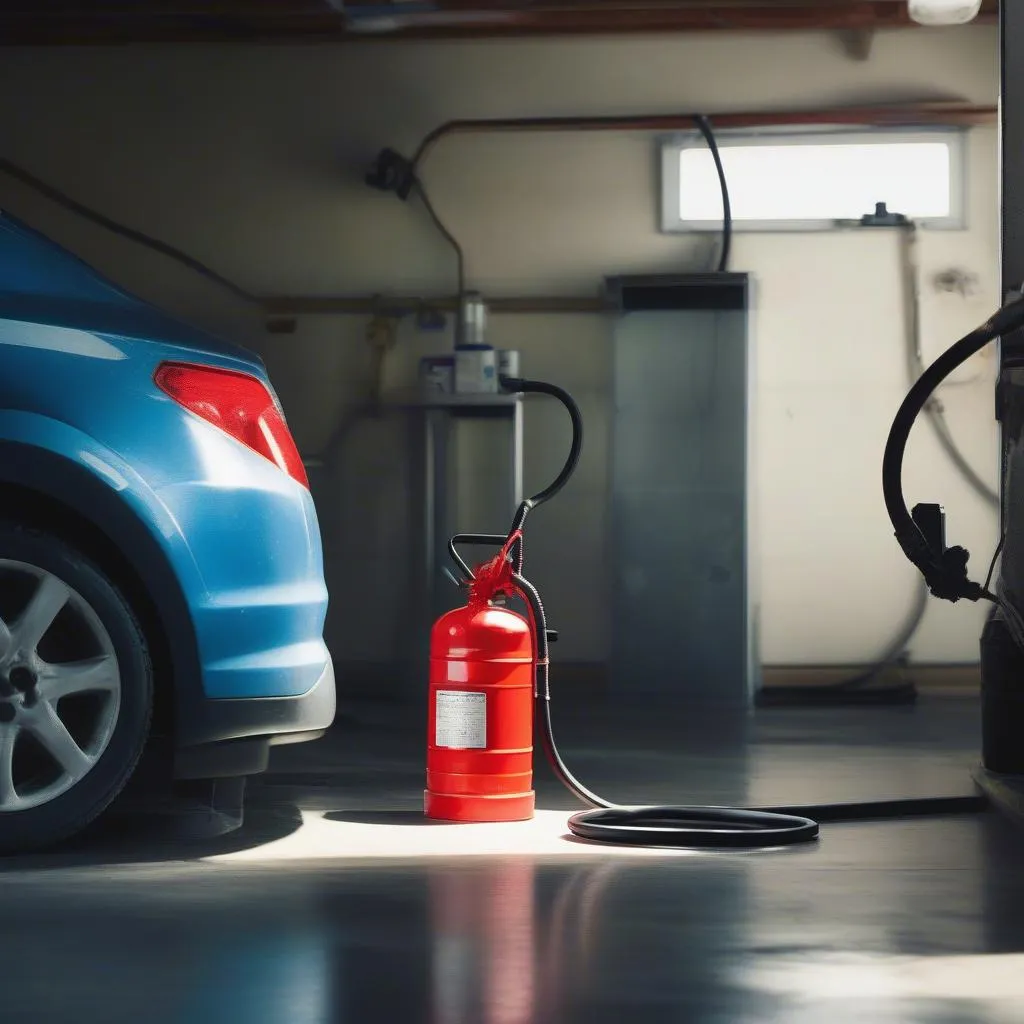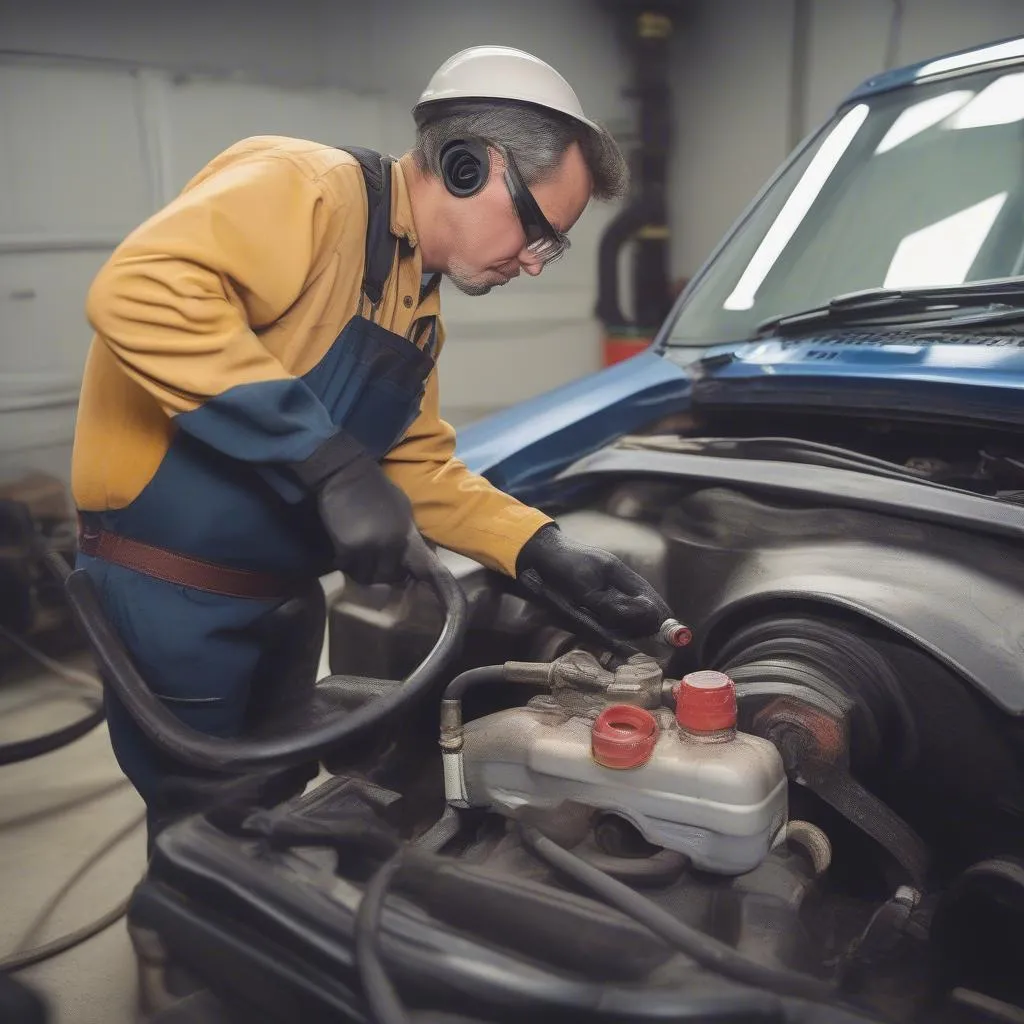Dealing with contaminated fuel or needing to access your gas tank for repairs can be a real headache, especially with anti-siphon devices in place. These devices, designed to deter fuel theft, can make draining your tank seem like a daunting task. But don’t worry! This guide will walk you through the process safely and effectively.
Understanding the Challenges of Anti-Siphon Devices
Before we dive in, it’s important to understand why these safety features exist. Anti-siphon devices are typically integrated into the fuel filler neck and act as a valve system. They prevent siphoning by only allowing fuel to flow in one direction—into the tank. This is a great security measure, but it can make draining the tank a bit trickier than traditional methods.
Identifying Your Anti-Siphon Device
The first step is to determine what kind of anti-siphon device your vehicle has. Here are a few common types:
1. Spring-Loaded Valve:
This is the most common type. It features a spring-loaded ball bearing that only allows fuel to flow when pressure is applied in the direction of the tank.
2. Flap Valve:
This type uses a hinged flap that opens when fuel is pumped in but closes when suction is applied.
3. Rollover Valve:
Primarily designed to prevent spills during accidents, this type can also deter siphoning by blocking fuel flow when the vehicle is not upright.
“Understanding the type of anti-siphon device your vehicle has is crucial for choosing the right approach to drain your gas tank safely and effectively,” says automotive expert, Dr. Emily Carter, author of “Modern Automotive Systems: A Comprehensive Guide.”
Tools and Safety Precautions
Essential Tools:
- Siphon Pump: Look for a pump specifically designed for use with anti-siphon devices.
- Fuel-Resistant Container: Choose a container that can hold the entire capacity of your gas tank.
- Gloves and Eye Protection: Fuel is corrosive and harmful; always prioritize safety.
- Jack and Jack Stands (Optional): For easier access, you might need to raise your vehicle slightly.
Safety First:
- Work in a Well-Ventilated Area: Fuel vapors are flammable and toxic. Work outdoors or in a very well-ventilated space.
- No Open Flames or Sparks: Absolutely no smoking or working near ignition sources.
- Have a Fire Extinguisher Handy: Be prepared for the unexpected.
 Siphon Pump and Gas Can
Siphon Pump and Gas Can
Draining Your Gas Tank
Step 1: Locate Your Fuel Tank Access Point: Consult your vehicle owner’s manual to locate the fuel pump access panel. It’s usually located under the rear seat or in the trunk.
Step 2: Relieve Fuel System Pressure (If Necessary): Refer to your vehicle’s manual for specific instructions on safely relieving fuel system pressure. This step may not be required for all vehicles.
Step 3: Access the Fuel Pump Assembly: Carefully remove the access panel and disconnect the fuel lines and electrical connectors from the fuel pump assembly.
Step 4: Connect the Siphon Pump: Attach the siphon pump’s intake hose to the fuel pump assembly’s outlet. Ensure a secure connection to prevent leaks.
Step 5: Drain the Tank: Position the other end of the siphon pump hose into your fuel-resistant container. Begin pumping until the desired amount of fuel is drained.
Step 6: Reassemble and Dispose of Fuel Properly: Once finished, carefully reassemble the fuel pump assembly, reconnect the fuel lines and electrical connectors, and secure the access panel. Dispose of the drained fuel responsibly at a designated hazardous waste facility.
FAQs:
Can I use compressed air to drain my gas tank?
We strongly advise against using compressed air. This method is extremely dangerous and could lead to an explosion or fire.
Can I use a regular siphon hose with an anti-siphon device?
It’s unlikely. Regular siphon hoses lack the mechanisms to bypass anti-siphon valves.
What if I’m uncomfortable performing this procedure myself?
It’s always best to err on the side of caution. Contact a qualified mechanic or automotive technician to assist you.
 Mechanic Draining Gas Tank
Mechanic Draining Gas Tank
Need Expert Assistance with Your Vehicle’s Electrical System?
Dealing with your vehicle’s fuel system or encountering electrical issues can be complex. CARDIAGTECH offers a range of advanced diagnostic tools and software to help you troubleshoot and repair automotive problems efficiently. For more information on our products and services, visit our website at Cardiagtech.com.
